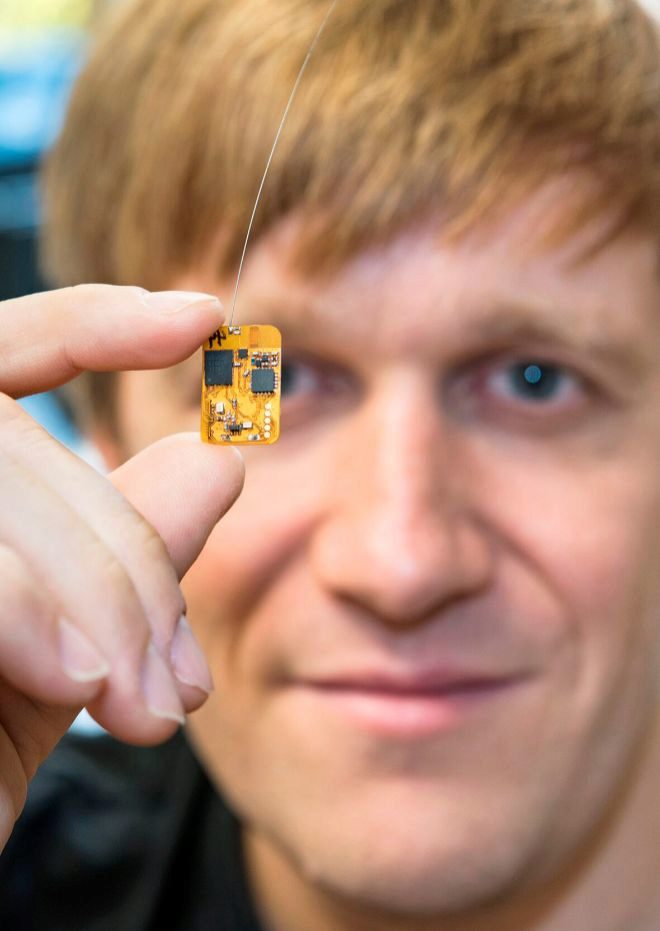The vampire costume is one of the classics of Halloween night. Beyond the legend, in nature there are real vampires and coinciding with this celebration, a team of scientists from Germany and the US publishes a study on them today. It is about vampire bats. These small nocturnal animals feed exclusively on blood, a couple of tablespoons a day is enough for them but if they do not get their dose, they die in just 48 hours. That is why the habitual thing in these species is to share a little of the blood that they suck their victims with bats of their colony that they have not been able to eat that day.
It is one of the aspects of their behavior that fascinate scientists, along with their longevity - they live about 15 years in nature and 30 years in captivity - that they are flying mammals, their nocturnal habits and their extraordinary ability to orient themselves in the dark , which makes them authentic living GPS. Therefore, they are among the most studied by ethologists, who have now discovered that in addition to cooperating with the individuals in their group, they are also faithful friends. According to research, vampire bats prefer to maintain their ties with the same individuals although they can choose to interact with many others. A form of friendship and loyalty that until now had been seen in primates.
This conclusion, published in the journal Current Biology , comes after an experiment that consisted of spying on the behavior of 23 vampire bats thanks to tiny sensors that were placed in their bodies and that allowed them to follow all their steps and find out who they joined. "Vampire bats are very sociable animals and one of the few species, together with primates or rats, that show reciprocal cooperation. Cooperation with non-family individuals is very interesting behavior from an evolutionary point of view." , Simon Ripperger, co-author of the study and researcher at the Leibniz Institute for Evolution and Biodiversity in Berlin, tells this newspaper,
As detailed by email, the group they formed was made up of 17 bats captured in the field and six others that were born while they were in captivity. "The experiment we have done - catching animals from nature - is quite unique. Radically changing their physical and social environment was necessary to find out if real and stable social ties were established."
After remaining 22 months in captivity, they were released . And that was when they found that the majority preferred to maintain ties with the same bats with whom they had shared captivity, even though they could now relate to hundreds of individuals of their kind.
Ripperger highlights another interesting result of his experiment. Once they were released, the six vampires who had been born in captivity moved away from the group: "We don't know what happened to them. We saw some marks on their bodies, so it seemed that there had been fights between them and that they had trouble integrating in the colony, "he says. Another possibility is that these vampires will try to return to the place where they were born - in this case a laboratory - because it is common for these animals to return to their place of origin, something they can easily do thanks to their excellent ability to orient themselves.
Other previous studies had shown how supportive vampire bats can be. For example, Gerald Carter, co-author of this research and scientist at the Ohio State University (USA), carried out another experiment that consisted of leaving a bat in a small cage, from which he could not leave or move. Nearby they placed other bats that could move and voluntarily approached their caged colleague to feed him.
"Our results represent a new proof that vampire bats establish social bonds similar to the friendship we see in some primates," Carter said in a statement that he has been studying these mammals since 2010 and that along with Ripperger will continue to investigate the routines of bats with these small devices.
According to the criteria of The Trust Project
Know more- Science and Health
- science
MorbillivirusThe new deadliest virus strain for dolphins circulates throughout the Mediterranean
Biotechnology An army of 162 million sterile flies to fight a plague
Space First spacewalk starring two female astronauts

